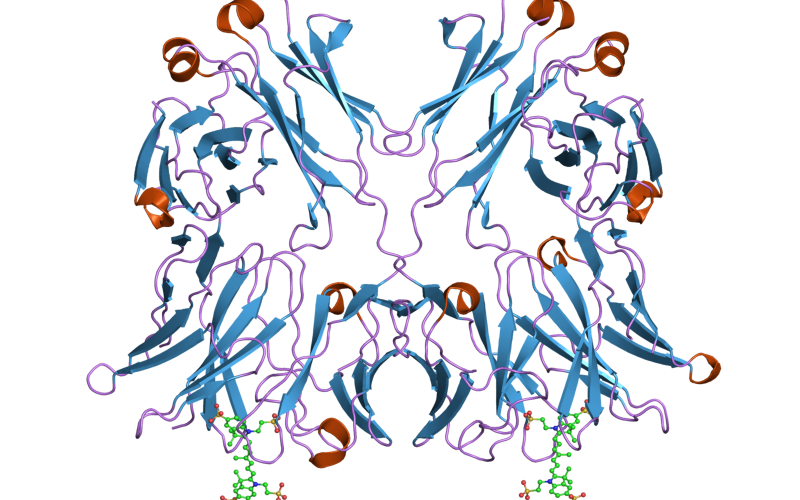
Single VH Gene Allows for Broad-Spectrum Antibody Response to LPS
Image: Immunoglobulin heavy chain variable domain, VH
Daniel Lingwood, PhD, Ragon Group Leader, recently published a paper in Cell Reports entitled, “A single human VH gene allows for a broad-spectrum antibody response targeting 2 bacterial lipopolysaccharides in the blood.” This paper, whose lead author was Maya Sangesland, used transgenic mice with humanized immune systems to show that one specific human VH gene is a used by different antibodies to recognize a key ‘primordial’ cell surface target called LPS.
Antibodies are produced by immune cells called B cells, which have a variety of different genes they can combine together to create an enormous diversity of antibodies. This allows the body to select for antibodies that are most effective against a particular pathogen. An antibody’s diversity comes largely from its heavy chain protein, which contains three loop-ended finger-like structures called CDR1, CDR2, and CDR3 which differ from antibody to antibody and are involved in binding to microbes and toxins. Of these three protrusions, CDR3 by far has the most diversity, and is hypervariable, meaning it comes from genes that can recombine in over 10^7 possible ways. By contrast, CDR1 and CDR2 come from a pool of about 45 different antibody VH genes.
The antibody field has long hypothesized that the antibody VH gene repertoire was shaped to recognize features that were common to pathogens or groups of pathogens. To finally test this notion, Dr. Lingwood’s group used a transgenic mouse system in which antibody responses have human-like CDR3 diversity but are limited to specific human VH sequences, selected for testing by the researchers. In this way Dr. Lingwood’s group could see if specific human VH genes were necessary to recognize a particular type of pathogen.
Using this approach, they tested six of the most common human VH sequences, and found that only one, IGHV1-2, allowed the mice to create antibodies that recognized LPS. Even though the hypervariable CDR3 section was still used to create antibodies that could recognize the LPS molecules tested, the less variable CDR1 and CDR2 sections, coded for by the IGHV1-2 gene, were needed for a robust antibody response against LPS. When using non-LPS antigens for a control, mice were about to respond without issue, indicating that the CDR loops encoded by human IGHV1-2 were what allowed to antibodies to recognize the shape of bacterial LPS.
They also found that VH1-2 recognized an evolutionarily conserved part of LPS, which is not likely to look different in different bacteria. This means the limited number of VH genes may have been selected specifically to recognize highly conserved pathogen features to help the body focus its antibody response.
The team also found that this IGHV1-2-endowed antibody response recognized an evolutionary conserved part of the LPS, which is seen across diverse bacteria. This suggests that human VH genes may indeed have been selected specifically to recognize highly conserved pathogen features, and that the antibody response, traditionally defined as ‘adaptive’, is also supported ‘innate-like’ antigen recognition characteristics.
Dr. Lingwood notes, “This primordial innate-like antigen recognition activity likely provides a functional basis for establishing human VH gene-endowed antibody responses in general,” a property that Lingwood’s group has recently shown can be exploited to vaccine-elicit human broadly neutralizing antibodies against influenza virus.